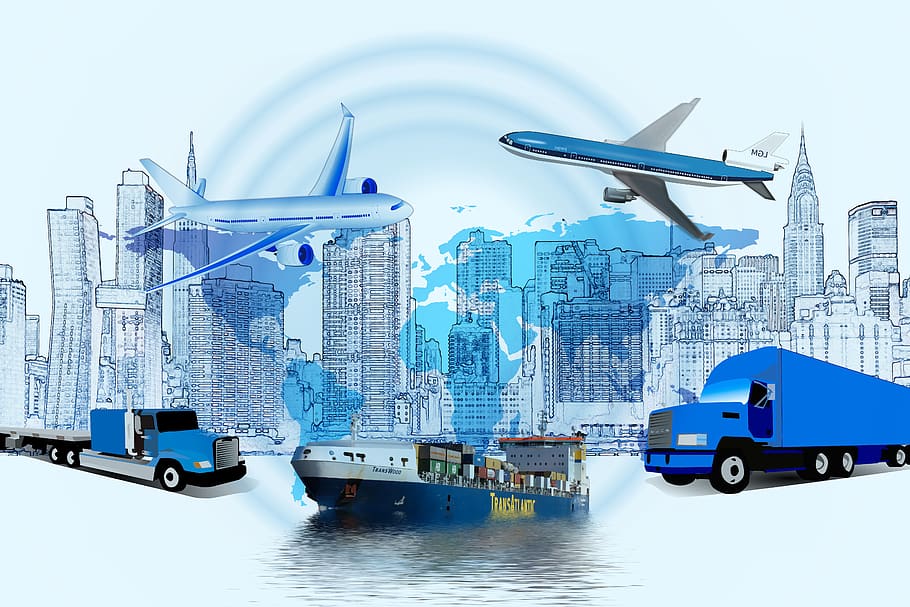The global third-party logistics market size is predicted to hit around $1710.58 billion by 2027 with a CAGR of 8.3%, according to new report study by Precedence Research.
The global third-party logistics market was valued at $919.12 billion in 2020. Third-party logistics is a method by which manufacturers outsource their logistics and distribution services.
A third-party logistics companies provide various services to its customers that include cross-docking, inventory management, packaging of products, and door-to-door delivery. These companies provide fast supply chain services in cost-effective way.
In addition, the outsourcing of supply chain services by the manufacturing companies reduces their shipping & delivery cost, inventory cost, as well as meet the technical requirement that increases their capability to focus more towards the product development and other growth strategies.
Growth Factors
Rising ecommerce and retail businesses are significantly escalating the demand for third-party logistics. Main factors contributing towards the growth of ecommerce business are changing consumer purchasing behaviour, easy availability of the products over internet, no need to go out for shopping in the digital world, and many others.
Additionally, growing demand for fast and cost-effective logistics services also aid in the growth of the third-party logistics market. Hence, the market anticipated to witness profound growth over the forecast period.
Apart from this, increasing tilt of manufacturing businesses to outsource their supply chain also provides significant escalation to the third-party logistics market. Earlier, these businesses invest largely on maintaining their supply chain and inventory as they need to manage their logistics from raw material procurement to finished product distribution process.
By outsourcing supply chain process, manufacturers are now free from warehouse management, inventory management, and focus more towards their market growth strategies.
However, COVID-19 outbreak in the early 2020 has significantly impacted the global supply chain. The logistics network has also been disrupted due to stringent regulations imposed by the government in order to prevent the rapid spread of virus.
Several third-party logistics companies are facing uncertainty for the movement of their goods. In addition, lack of human resource and less working hour have also impacted badly on the third-party logistics market.
North America dominated the global third-party logistics market in 2020 and expected to grow at a steady rate owing to rising demand for cold storage in the region.
The Asia Pacific anticipated to witness the highest growth rate over the forecast period due to increasing industrialisation and manufacturing businesses in the region.
By service, Domestic Transportation Management (DTM) led the global third-party logistics market in 2020 with a revenue share of around 30.3%.
Roadways segment captured major revenue share of the global market because of rapid development in the logistics infrastructure. Airways expected to be the fastest growing transportation segment owing to need for fast and cost-effective delivery services. In terms of end-use, manufacturing segment captured major revenue share of nearly 25.5% owing to shifting of companies to supply chain outsourcing rather than maintaining in-house supply chain. Retail segment anticipated flourishing growth over the upcoming years because of rapid growth of retail businesses
The Asia Pacific exhibits the fastest growth rate over the upcoming years owing several policies for trade liberalisation coupled with rapid growth in the manufacturing sector in developing as well as under-developed countries.
China, India, South Korea, Japan, and Taiwan are some of the rapidly developing countries in terms of manufacturing, transportation, and industrialisation that account to propel the market growth in the region. For instance, the Government of India has set the Logistics Efficiency Enhancement Program (LEEP) for the development of multi-model logistics park.
Key Players & Strategies
The prominent players in the market are more focused to include technological advancements to their services that include route optimisation, real time tracking of shipments, and advanced driver assistance systems. These technologies help companies to maintain complete visibility during the entire supply chain.
Moreover, some market players are also highly focused towards inorganic strategies of growth such as merger & acquisition, partnership, regional expansion, and many others, the report added.
For instance, in August 2019, Panalpina Welt transport Holding AG, a logistics company based at Switzerland was acquired by DSV. This increases the competitive value of the company in the market.





